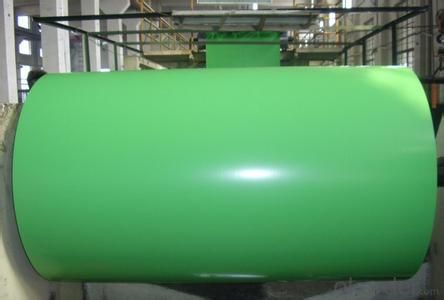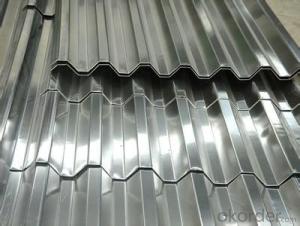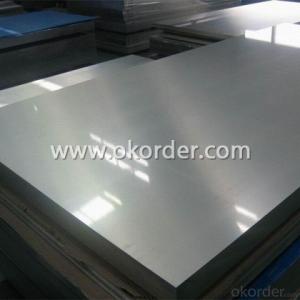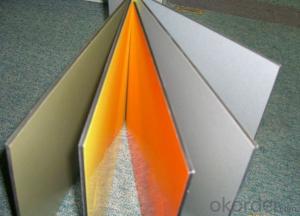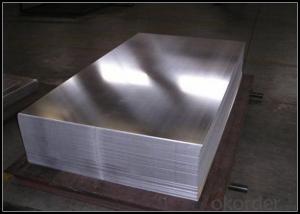Aluminum Grill Sheets for Color Coated Glass Wall Curtain
- Loading Port:
- Shanghai
- Payment Terms:
- TT OR LC
- Min Order Qty:
- 5 m.t.
- Supply Capability:
- 20000 m.t./month
OKorder Service Pledge
OKorder Financial Service
You Might Also Like
Specification
1.Structure of Color Coated Aluminium Strips for Glass Wall Curtain
Color Coated Aluminium Strips for Glass Wall Curtain are widly used in decoration field. For the painting, it depends on the using evironment. If you use in the open air, we recommend the PVDF coated aluminium coils. This kind of painting can last 15-20 years. If you use in the room, we recommend PE coated aluminium coils. The price is much more competitive.
2. Main features of Color Coated Aluminium Strips for Glass Wall Curtain
a.Competitive price---We have our own mills and can produce mill finished aluminium coils, so we can control the production cost better.
b.Professional after-sale service---We have more than 15 years exportation experience and you need not worry about the exporation problems.
c.Fast delivery time---We can control the delivery time within 35 days.
3. Image of Color Coated Aluminium Strips for Glass Wall Curtain
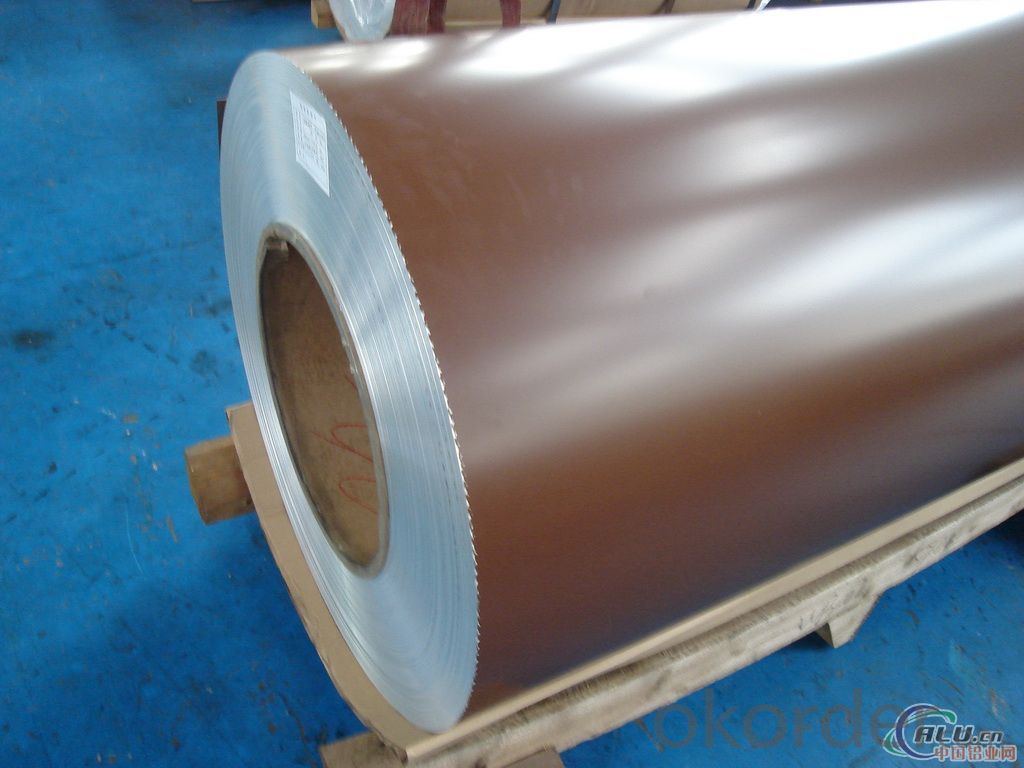
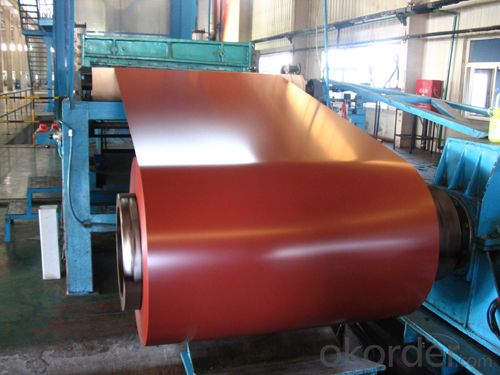
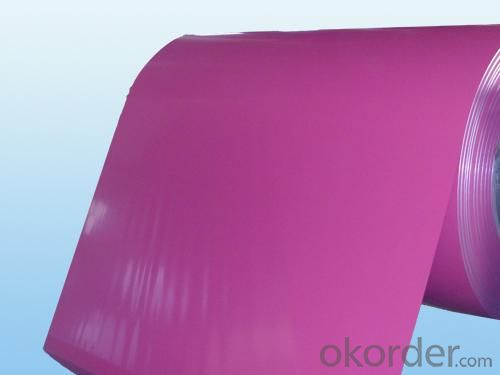
4. Product Specification of Color Coated Aluminium Strips for Glass Wall Curtain
| Alloy | Temper | Color Coated | Thickness | Width |
| AA1050 | F | PE | 0.2MM-2MM | 1000MM-1500MM |
5.FAQ of Color Coated Aluminium Strips for Glass Wall Curtain
What is the quality standard?
---Usually our standard is GB3880-2006
What is the largest width?
---It is 2300mm
What is the MOQ?
---Usually we can accept 80 tons.
- Q: What are the different grades or alloys of aluminum available for sheets?
- Aluminum sheets come in various grades and alloys, each with its own unique properties. Grade 3003, for example, is widely used and offers good corrosion resistance and moderate strength. It finds applications in general sheet metal work, cooking utensils, signage, and chemical equipment. On the other hand, grade 5052 is known for its excellent corrosion resistance and high strength. It is often utilized in marine applications like boat hulls and components, as well as aircraft parts and transportation equipment. Grade 6061 is a versatile aluminum grade that combines strength, weldability, and machinability. It is commonly chosen for structural components such as frames, railings, and automotive parts. It is also frequently employed in the architectural field for construction purposes. Apart from these grades, there are numerous specialized aluminum alloys available for specific applications. These alloys may possess enhanced characteristics like improved strength, heat resistance, or electrical conductivity. Examples of such alloys include 2024, 7075, and 6063. When choosing the appropriate aluminum sheet grade or alloy, it is crucial to consider factors such as desired strength, corrosion resistance, formability, and specific application requirements. Seeking advice from a knowledgeable supplier or expert can ensure the correct grade of aluminum is selected for the intended usage.
- Q: Can aluminum sheets be easily shaped or bent?
- Yes, aluminum sheets can be easily shaped or bent. Aluminum is known for its excellent malleability and ductility, which allows it to be easily formed into various shapes and bends. It can be manipulated using a variety of techniques such as rolling, pressing, or even using hand tools. The malleability of aluminum makes it a preferred choice in industries such as automotive, aerospace, and construction, where it is commonly used in the production of parts and structures that require complex shapes and bends. Additionally, aluminum's lightweight and corrosion-resistant properties further contribute to its suitability for shaping and bending processes.
- Q: Can the aluminum sheets be used for manufacturing automotive wheels?
- Yes, aluminum sheets can be used for manufacturing automotive wheels. Aluminum is a lightweight and durable material that is commonly used in the production of wheels due to its strength-to-weight ratio and corrosion resistance.
- Q: Is it suitable to use aluminum sheets as roofing materials in areas with high temperatures?
- <p>Yes, aluminum sheets can be used for roofing materials in hot climates. Aluminum has a high thermal conductivity, which means it can quickly dissipate heat, helping to keep buildings cooler. It also has excellent resistance to corrosion, which is beneficial in areas with high humidity or salt air. Additionally, aluminum is lightweight, easy to install, and can be recycled, making it an environmentally friendly option. However, it's important to ensure proper ventilation and insulation to maximize its performance in hot climates.</p>
- Q: How do aluminum sheets compare to other metals in terms of strength?
- Compared to other metals, aluminum sheets typically possess lower strength. Although aluminum is lightweight and exhibits excellent corrosion resistance, it lacks the same level of strength as steel or titanium. In terms of tensile strength and yield strength, aluminum falls short when compared to these metals, rendering it more susceptible to deformation and failure when subjected to heavy loads. Nevertheless, by alloying aluminum with other elements, its strength can be enhanced, allowing certain aluminum alloys to compete with or even surpass the strength of certain other metals. Furthermore, aluminum's strength-to-weight ratio stands as one of its primary advantages, making it the preferred choice in industries where weight reduction is critical, such as aerospace and automotive. All in all, while aluminum may not possess the highest level of strength among metals, its combination of strength, lightweight properties, and corrosion resistance renders it an adaptable material for various applications.
- Q: my grandpa gave me a family harloom, a 1971 Honda Trail 90, after it sat in a shed for a good 30 years. i have got most everything in tip top shape except for the polished aluminum has become lightly tarnished. and because i am a perfectionist
- You can use furniture stripper to dissolve the clear-coat. Then you can polish up the parts using Simichrome or other chrome polish. Then spray on a new clear-coat. I used a Harley-Davidson product in the past (on a Honda) with very good results. Note that you may get a finish which is actually glossier than the original Honda finish. You may prefer that, or you may be more interested in replicating the original finish. It all depends on what you want, and how far you go with the polishing. In my case, I ended up having the parts professionally triple chrome plated several years later for a really custom look (once I had the money to do it). BTW, your cases are made of an aluminum alloy. Apparently, pure aluminum does not tarnish, but is not considered strong enough.
- Q: What are the different methods of surface cleaning for adhesive bonding of aluminum sheet?
- There are several methods of surface cleaning for adhesive bonding of aluminum sheet. These methods include mechanical cleaning, chemical cleaning, and plasma cleaning. 1. Mechanical Cleaning: This method involves physically removing any contaminants or debris from the surface of the aluminum sheet. It can be done using various techniques such as sanding, grinding, or scrubbing with abrasive materials. Mechanical cleaning is effective in removing loose particles and surface imperfections, but it may not be able to eliminate all types of contaminants. 2. Chemical Cleaning: Chemical cleaning involves the use of specific cleaning agents or solvents to remove contaminants from the aluminum surface. These cleaning agents can dissolve or dislodge dirt, grease, oil, or other organic substances. Chemical cleaning is often combined with mechanical cleaning to ensure thorough surface preparation. It is important to choose a cleaning agent that is compatible with both the adhesive and the aluminum sheet to avoid any adverse reactions. 3. Plasma Cleaning: Plasma cleaning is a more advanced method that uses ionized gases to clean and activate the surface of the aluminum sheet. The plasma generates reactive species that can break down and remove contaminants from the surface, while also creating active sites for better adhesion. Plasma cleaning is effective in removing organic and inorganic contaminants, as well as oxide layers that may hinder bonding. Each method has its advantages and limitations, and the choice of surface cleaning method depends on the specific requirements of the adhesive bonding process. It is important to carefully evaluate the surface condition and the type of contaminants present to determine the most suitable cleaning method. Additionally, proper surface preparation techniques should be followed to ensure successful adhesive bonding of aluminum sheet.
- Q: how to distinguish the physical property of copper sheet from the one of aluminum sheet?
- physical property: copper sheet: golden, heavy, aluminum sheet: white, light.
- Q: Can aluminum sheets be used for roof flashing?
- Yes, aluminum sheets can be used for roof flashing. Aluminum is a popular choice for roof flashing due to its durability, corrosion resistance, and lightweight properties. It provides a reliable barrier against water penetration and helps to redirect water away from vulnerable areas on the roof, such as valleys and chimneys. Additionally, aluminum flashing is relatively easy to install and maintain, making it a practical choice for roof flashing purposes.
- Q: I've heard certain eyeliners contain lead and that it's a harmful (cancerous) ingredient. I use Urban Decay's 24/7 eyeliner and on the box it says it contains aluminum powder. Is that another word for lead? If not, is aluminum powder harmful too? Thanks!
- Aluminium and lead are two different elements - they're not the same thing. (Aluminium is the stuff that soft drink cans are made of.) But i would watch out for aluminium as well. There is a small amount of evidence that aluminium might be linked to Alzheimers and things like that. It's much *less* of a risk than lead, but generally metal powders are not things that you want in your body, if you can avoid it.
Send your message to us
Aluminum Grill Sheets for Color Coated Glass Wall Curtain
- Loading Port:
- Shanghai
- Payment Terms:
- TT OR LC
- Min Order Qty:
- 5 m.t.
- Supply Capability:
- 20000 m.t./month
OKorder Service Pledge
OKorder Financial Service
Similar products
Hot products
Hot Searches
Related keywords




